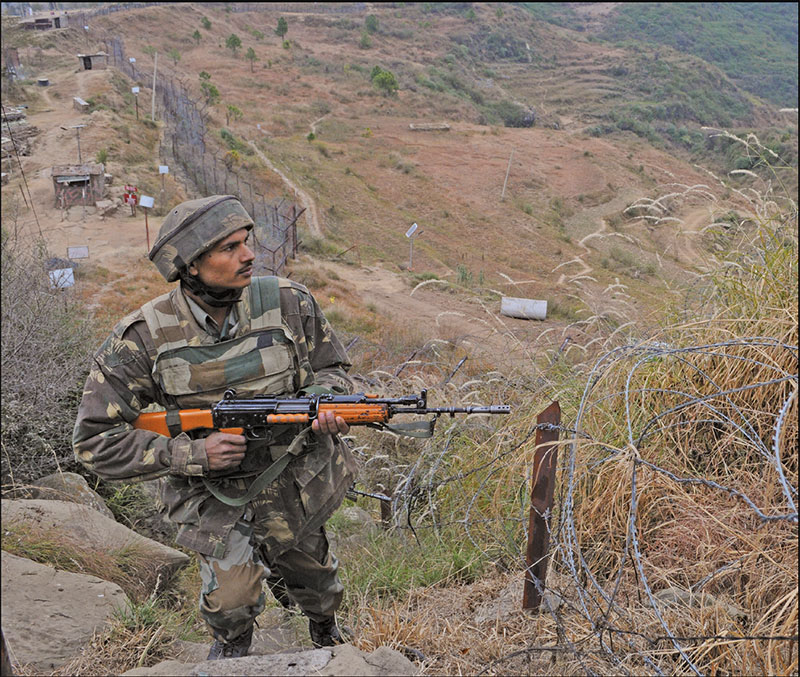The armed forces remain poorly protected despite recent orders for modern body armour and helmets
Yunus Dar | New Delhi
In 2009, after none of the vendors cleared the trials for modern bulletproof jackets, the order for 1.86 lakh bulletproof jackets (BPJ) fell through without any result. The jackets were tested on the ability to withstand .30 calibre armour-piercing bullets in a series of tests. It was only in 2018 that the request for more than 1.86 lakh BPJ was accepted under ‘Make in India’ contract, finally paving the way for the army to procure life-saving kit for its soldiers.

The contract was won by SMPP Pvt Ltd, a small Delhi-based company, which has a Research and Development centre in the Okhla Industrial Area. The company anticipates the complete delivery of all the jackets within three years, and claims the BPJ have ‘Boron Carbide Ceramic’ which is the lightest material for ballistic protection.
The army also signed on for 50,000 BPJ in 2016 as part of an interim emergency purchase. However, these jackets were designed to older specifications and did not meet the modern standards and warfare situations. The army’s overall requirement of more than 3.5 lakh bulletproof jackets fell to deaf ears since, with hardly any major procurement.
In another significant step, the government signed the contract to procure 1,59,000 ballistic helmets for the armed forces, with MKU, an Indian firm which supplies military equipment to NATO and the UN and has a wide export base around the world. For decades, the Indian Army was using obsolete helmets which could offer no protection from bullets and could only protect a soldier from splinters, rocks and a bullet that has ricocheted and grazed the helmet.
The soldiers are the most important components in warfare and need the critical protection gear in the battlefield, being the most vulnerable. The BPJ is the most basic equipment for protection of a soldier and a simplistic asset. Despite that it seems to be the most neglected equipment for the Indian armed forces.
For the first time this year, India will have its own standard for BPJ: IS17051:2018, finalised recently. The standard prescribes minimum requirements of BPJs against small arms and their evaluation procedures. For BPJs, the country did not have any specific standards and the orders so far that had been placed for the jackets for the armed forces were based on the specifications laid out by the customer. The jackets and helmets with the Indian forces are based on the NIJ III+ standard, the ballistic resistance of a body armour. The NIJ standard benchmarks the effectiveness of most ballistic-resistant jackets. And it’s a fact that 100 per cent BPJs don’t exist, the conventional body armour provides a certain degree of protection against various kinds of handgun ammunition.
The army has since long been asserting its requirement of roughly 353,465 BPJs, as well as the helmets, as minimum essential requirement for the troops operating in Jammu and Kashmir and Northeast. The overall requirement would be much larger in order to provide protection to all troops from all arms and services which are expected to be exposed to enemy fire in contact battle.
The Kanpur-based MKU, which has received the order for 1,59,000 ballistic helmets, has designed them to bear the impact of 9 mm ammunition fired from a short range, which meets the global standard for protection among leading armed forces. They are also designed to be comfortable and many of them can be integrated with communications devices.
You must be logged in to view this content.

